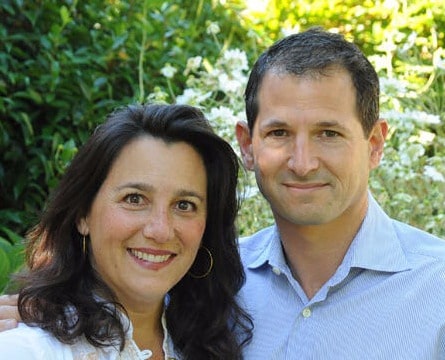Elemental Green: Where did the idea for this home first come from?
Stuart: I have always enjoyed nature and spending time outdoors (hiking, mountain, biking, trail running, rock climbing, mountaineering). When I started reading about global warming about 15 years ago, I knew we had to act. The first step was changing my job to focus exclusively on sustainability. Once I became aware of the various technologies that could help make buildings safer and healthier – not only for the environment but also the inhabitants of the buildings, the construction workers, and the manufacturers of building products – I decided to build a net zero home. I also wanted to at little to no cost premium to demonstrate that creating an aesthetically pleasing building was achievable. We wanted to be a beacon for others – not only in single family homes but multi-family, commercial, and industrial buildings as well.
EG: What’s the most common reaction when people first see the home?
Stuart: Most people expect an ugly, small, “green” box with lots of compromises. Instead, they see a beautiful California mission style home with incredible fit and finish. The second thing they notice is how great the air is. People with cat and dog allergies are in the house for hours without noticing we have pets until our furry friends walk in the room. The air is fresh because we constantly (24/7) recycle the air and run it through filters. They love all the natural light (as well as the quality of the LED lighting), the abundance of fruits and vegetables growing in the courtyard and rear yard, and they usually want to understand how we built a net-zero home. People are quickly hooked and we become their new build or renovation consultants.
EG: What’s your favorite feature of the home?
Stuart: Clean lines, the quality of the air, the benefit of having lots of thermal mass, which keeps the house warm in the winter and cool in the summer, the safety of the triple pane windows and doors …and the fact that the house is super quiet given the quality of the envelope, including the triple pane windows and doors.
EG: What’s one thing you wish you would have known before you started the project?
Stuart: Having a “bible” (or website, like yours!) of sustainable product manufacturers would have been invaluable.
EG: If you could change one thing about the house, what would it be?
Stuart: I wish we had followed our “simplicity” principle more closely. Complexity usually equals problems and additional truck rolls.
EG: What’s one piece of advice you’d give someone who wanted to build a house like yours?
Stuart: Don’t let anyone tell you that “it can’t be done” or “it isn’t done that way” or “it will cost more.” Virtually everything that makes sense conceptually can be done, should have been done (by the building industry before now), and generally costs no more than doing it the conventional way. In fact, the first costs are no higher and the ongoing operating and maintenance costs are a fraction of conventional homes.
Just for fun…
EG: What do you think about when you’re alone in your car?
Stuart: Music, the next peak to climb, the next trail to run or bike, how to rid the world of bigotry and … how to reduce waste of all kinds (energy, water, materials, etc.). Seriously, waste, particularly waste that hurts the environment and human health, seems so foolish to me.
EG: If you were stranded on a deserted island, what three things would you have and why?
Stuart: Family and friends, good food and wine, and materials with which I could build a boat!
EG: What’s the last book you read?
Stuart: I have a bad habit of reading several books simultaneously. Here is what is on my bedside table at the moment:
- The Undoing Project, Michael Lewis
- Thinking Fast and Slow, Daniel Kahneman
- Stealing Fire, Steven Kotler & Jamie Wheal
- Let There Be Water, Seth Siegel
- Motherland, Rita Goldberg
- Dora Bruder, Patrick Modiano
- The American Alpine Journal, American Alpine Club (AAC)
- Accidents in North American Climbing (2016), AAC
- The Wright Brothers, David McCullough
- Einstein, Walter Isaacson
- Instrument Pilot’s Handbook, Rod Machado
- Atlantic High, William Buckley
- Various maps of the Sierras including one of the John Muir Trail trail, which I am hiking this summer.


